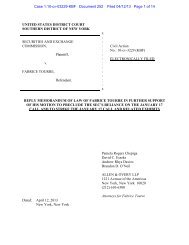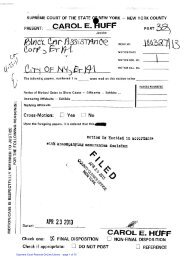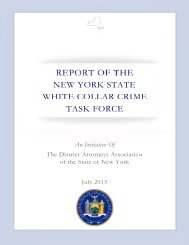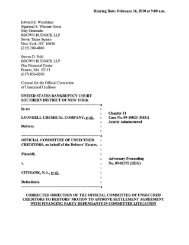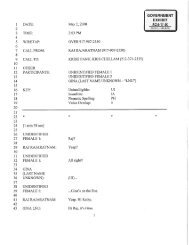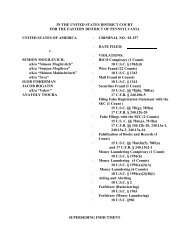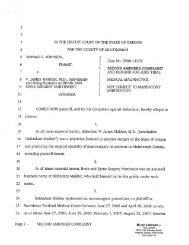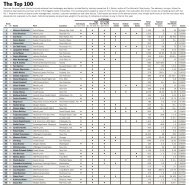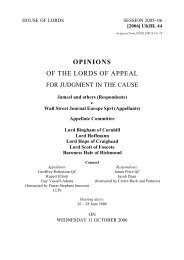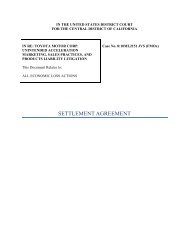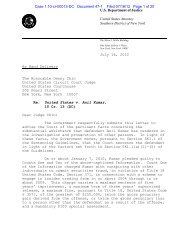Salz Review - Wall Street Journal
Salz Review - Wall Street Journal
Salz Review - Wall Street Journal
Create successful ePaper yourself
Turn your PDF publications into a flip-book with our unique Google optimized e-Paper software.
29<br />
<strong>Salz</strong> <strong>Review</strong><br />
An Independent <strong>Review</strong> of Barclays’ Business Practices<br />
Big Bang and the 1990s<br />
4.6 By the time of Big Bang, Barclays had 110,000 employees 31 and it sought to take<br />
advantage of the deregulation in wholesale markets. In 1986 it bought the<br />
stockbroker de Zoete & Bevan and stockjobber Wedd Durlacher to create Barclays<br />
de Zoete Wedd (BZW).<br />
4.7 In common with other banks, Barclays incurred significant losses during the UK<br />
economic downturn of the early 1990s, setting aside more than £4 billion in retail<br />
and commercial credit losses in 1991 and 1992. Interviewees told us that Barclays<br />
learned major lessons from this period, resolving to build more robust credit risk<br />
systems. Andrew Buxton, a descendant of one of the bank’s founders, became<br />
Group Chief Executive in April 1992, and Group Chief Executive and Chairman<br />
in 1993.<br />
4.8 There followed a period of retrenchment until economic conditions improved from<br />
the mid-1990s. During 1994, Martin Taylor became Barclays’ Group Chief<br />
Executive, bringing non-banking experience from the textile industry and a<br />
perspective which was described to us as that of an outsider. He was the first Group<br />
Chief Executive with no connections with the founding families of the bank.<br />
4.9 In 1995, Barclays was one of the first banks to set up an internet website, a precursor<br />
to online banking. In that year, Barclays also created Barclays Global Investors (BGI)<br />
when it merged its BZW Investment Management unit with fund manager Wells<br />
Fargo Nikko Investment Advisors, purchased for approximately $440 million. BGI,<br />
headquartered in San Francisco, was allowed to run as an autonomous, standalone<br />
division of Barclays.<br />
4.10 Bob Diamond joined Barclays from Credit Suisse First Boston in 1996. A year later,<br />
after suffering continuing losses in BZW, the bank abandoned BZW’s equities and<br />
M&A advisory businesses. The retained fixed income business was renamed Barclays<br />
Capital, and Bob Diamond was appointed its Chief Executive. Barclays Capital got<br />
off to an inauspicious start in 1998, incurring significant losses on Russian bonds and<br />
on its exposure to Long-Term Capital Management. There followed an internal<br />
debate on the bank’s footprint in investment banking, not the first or last time this<br />
has been the subject of debate in Barclays.<br />
4.11 Martin Taylor left in November 1998. After his intended successor withdrew for<br />
health reasons, the Chairman Sir Peter Middleton took over as interim Group Chief<br />
Executive. Matthew Barrett, an experienced banker having previously run a Canadian<br />
bank, was appointed Group Chief Executive in October 1999.<br />
2000 to 2007<br />
4.12 By 2000, Barclays was the fourth largest UK bank – behind Lloyds, RBS and HSBC<br />
– with 1,718 branches. In that year, the bank acquired the recently demutualised<br />
31 Barclays, 1986 Annual Report, March 1987, p. 34.




